PRC1
-
Official Full Name
protein regulator of cytokinesis 1 -
Overview
Protein Regulator of Cytokinesis 1 (PRC1) is involved in cytokinesis. PRC1 is a good substrate for several CDKs in vitro and is phosphorylated in vivo at sites that are phosphorylated by CDK in vitro, strongly suggesting that PRC1 is an in vivo CDK substrate. PRC1 protein levels are high during S and G2/M and drop dramatically after cells exit mitosis and enter G1. PRC1 is a nuclear protein in interphase, becomes associated with mitotic spindles in a highly dynamic manner during mitosis, and localizes to the cell mid-body during cytokinesis. PRC1, a mitotic spindle-associated Cdk substrate that is essential to cell cleavage,Is a microtubule binding and bundling protein both in vivo and in vitro. Overexpression of PRC1 extensively bundles interphase microtubules, but does -
Synonyms
PRC1;protein regulator of cytokinesis 1;anaphase spindle elongation 1 homolog (S. cerevisiae);ASE1;protein regulating cytokinesis 1;anaphase spindle elongation 1 homolog;MGC1671;MGC3669
Recombinant Proteins
- Human
- Yeast
- Chicken
- Mouse
- Insect Cells
- Yeast
- Mammalian Cells
- HEK293
- E.coli
- His
- Non
- Flag
- Avi
- Fc
- DDK
- Myc
- GST
| Cat.# | Product name | Source (Host) | Species | Tag | Protein Length | Price |
|---|---|---|---|---|---|---|
| PRC1-527H | Recombinant Human PRC1 Protein, His-tagged | Insect Cells | Human | His | 1-620 a.a. | |
| PRC1-5267P |
Active Native Yeast PRC1 Protein
|
Yeast | Yeast | Non |
|
|
| PRC1-3585C | Recombinant Chicken PRC1 | Mammalian Cells | Chicken | His |
|
|
| PRC1-459HCL | Recombinant Human PRC1 cell lysate | Insect Cells | Human | Non |
|
|
| PRC1-1623HFL | Recombinant Full Length Human PRC1 Protein, C-Flag-tagged | Mammalian Cells | Human | Flag | Full L. |
|
| PRC1-1755H | Recombinant Human PRC1 Protein, His (Fc)-Avi-tagged | HEK293 | Human | Avi&Fc&His |
|
|
| PRC1-1755H-B | Recombinant Human PRC1 Protein Pre-coupled Magnetic Beads | HEK293 | Human |
|
||
| PRC1-2915H | Recombinant Full Length Human PRC1 Protein, MYC/DDK-tagged | HEK293 | Human | DDK&Myc | Full L. |
|
| Prc1-5097M | Recombinant Mouse Prc1 Protein, Myc/DDK-tagged | HEK293 | Mouse | DDK&Myc |
|
|
| PRC1-528H | Recombinant Human PRC1 protein, GST-tagged | E.coli | Human | GST | 13-175 aa |
|
Background
What is PRC1 protein?
PRC1 gene (protein regulator of cytokinesis 1) is a protein coding gene which situated on the long arm of chromosome 15 at locus 15q26. This gene encodes a protein that is involved in cytokinesis. The protein is present at high levels during the S and G2/M phases of mitosis but its levels drop dramatically when the cell exits mitosis and enters the G1 phase. It is located in the nucleus during interphase, becomes associated with mitotic spindles in a highly dynamic manner during mitosis, and localizes to the cell mid-body during cytokinesis. This protein has been shown to be a substrate of several cyclin-dependent kinases (CDKs). It is necessary for polarizing parallel microtubules and concentrating the factors responsible for contractile ring assembly. The PRC1 protein is consisted of 620 amino acids and PRC1 molecular weight is approximately 71.6 kDa.
What is the function of PRC1 protein?
The PRC1 complex, through its catalytic core, consists of one of the RING1A/B and Polycomb group RING finger (PCGF) proteins and can be subdivided into six distinct subtypes, each with its own unique set of associated proteins and mode of action. Traditionally, PRC1 has been thought of as a transcription suppressant that compacts local chromatin by adding monoubiquitination (H2AK119ub1) to the 119th lysine of histone H2A. However, recent evidence suggests that PRC1 also activates transcription in specific situations. In addition, studies of higher-order chromatin structure have revealed novel functions of PRC1 in mediating long-distance interactions, which provide different perspectives on the transcriptional activation and inhibition features of PRC1.
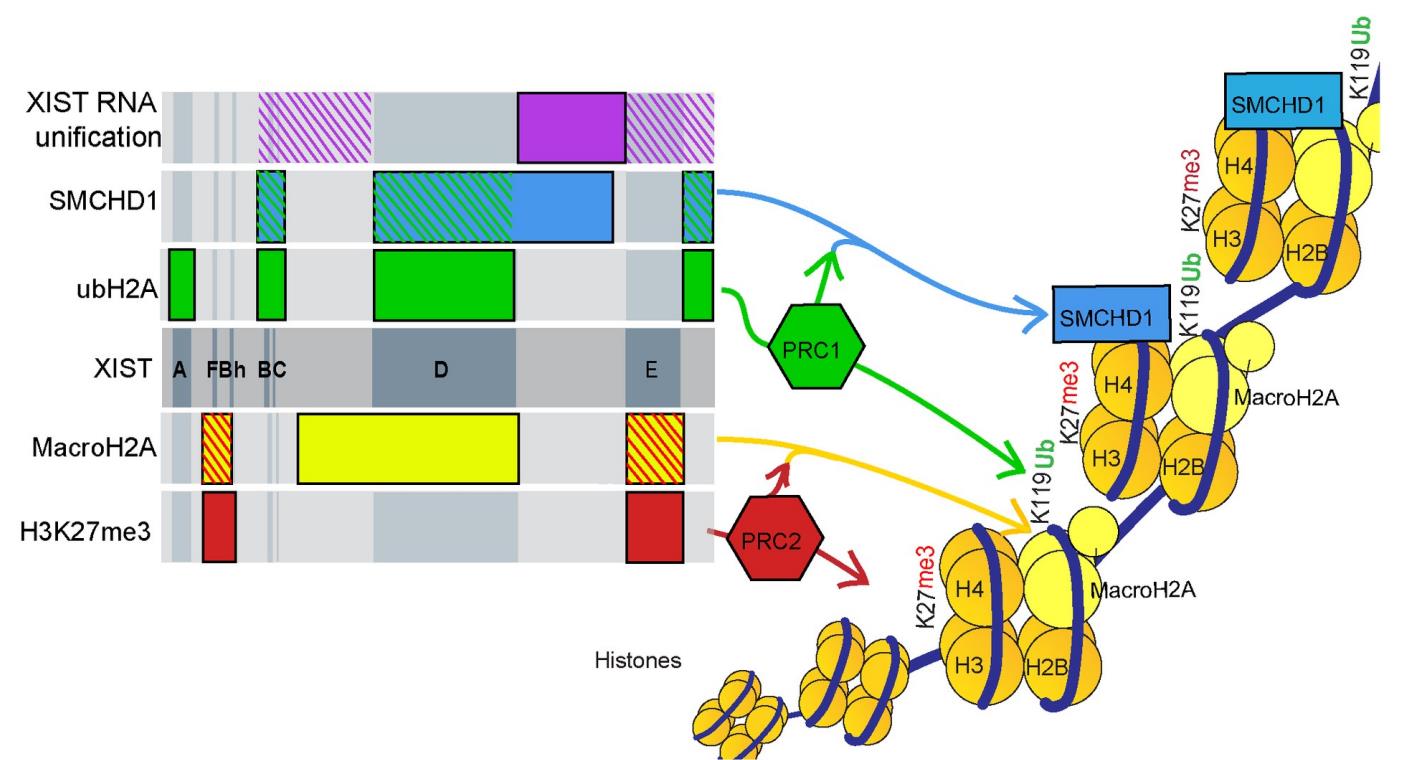
Fig1. Summary of the regions and pathways proposed to be crucial for XIST and PRC mediated chromatin remodelling. (Thomas Dixon-McDougall, 2021)
PRC1 Related Signaling Pathway
PRC1 protein is involved in the regulation of cell cycle and cell division, and it may be associated with key signaling pathways related to tumorigenesis and development, such as its role in lung adenocarcinoma. In oral squamous cell carcinoma (OSCC), the p53/PRC1/EGFR signaling pathway has been found to be involved in tumor progression. PRC1 interacts with the destruction complex of β-catenin to regulate the isolation of the WNT3A-induced destruction complex on the membrane, affecting the Wnt signaling pathway. RYBP, as a PRC1-associated protein, can act as a competitive inhibitor of RBPJ to regulate Notch signaling in a PRC1-independent manner.
PRC1 Related Diseases
PRC1 protein is associated with many diseases, especially the occurrence and development of cancer. Studies have shown that PRC1 is abnormally expressed in many types of cancer, including lung, breast, prostate, ovarian, and multiple myeloma. In addition, abnormal function of PRC1 has been associated with diseases such as type 2 diabetes, metabolic syndrome, coronary artery disease, tuberculosis, and hyperglycemia. The abnormal expression of PRC1 may affect the regulation of cell cycle, thereby promoting the proliferation and migration of tumor cells, making it a potential target for cancer therapy.
Bioapplications of PRC1
Drugs that target PRC1 or its related pathways like PCR1 inhibitors may help inhibit the proliferation and migration of tumor cells. Functional studies of PRC1 could help develop new cancer immunotherapy strategies, such as preventing cancer recurrence by improving the immune memory capacity of T cells. In plant biology, the study of PRC1 contributes to the understanding of epigenetic regulatory mechanisms during plant development. Finally, the study of the regulatory mechanisms of PRC1 may also advance the understanding of human congenital diseases and related genetic disorders.
Case Study
Case Study 1: Agata Gluszek-Kustusz, 2023
During mitosis, spindle architecture alters as chromosomes segregate into daughter cells. The microtubule crosslinker protein regulator of cytokinesis 1 (PRC1) is essential for spindle stability, chromosome segregation and completion of cytokinesis, but how it recruits motors to the central spindle to coordinate the segregation of chromosomes is unknown. Here, researchers combine structural and cell biology approaches to show that the human CENP-E motor, which is essential for chromosome capture and alignment by microtubules, binds to PRC1 through a conserved hydrophobic motif. This binding mechanism is also used by Kinesin-4 Kif4A:PRC1. Using in vitro reconstitution, we demonstrate that CENP-E slides antiparallel PRC1-crosslinked microtubules. They find that the regulation of CENP-E -PRC1 interaction is spatially and temporally coupled with relocalization to overlapping microtubules in anaphase. Finally, researchers demonstrate that the PRC1-microtubule motor interaction is essential in anaphase to control chromosome partitioning, retain central spindle integrity and ensure cytokinesis.
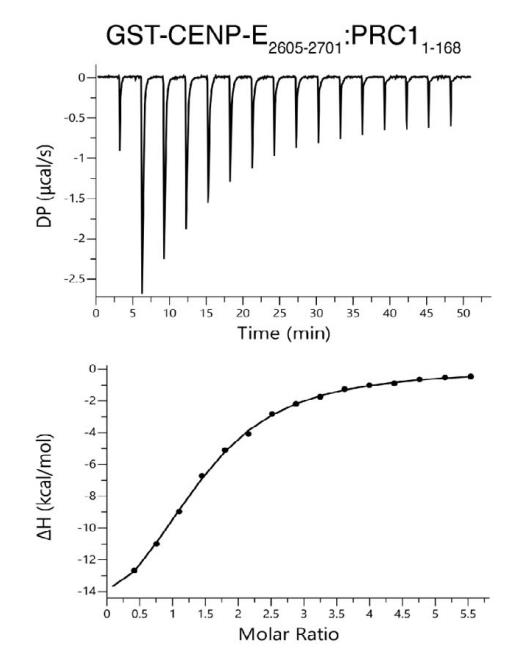
Fig1. Characterization by ITC of the PRC11–168/GST-CENP-E2605–2701 interaction.
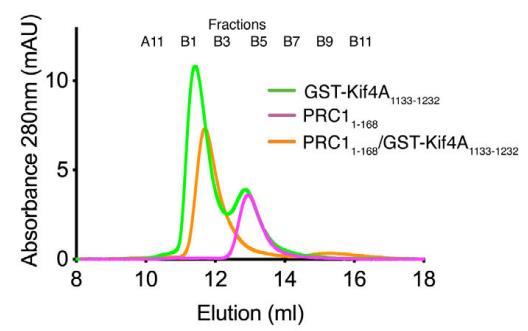
Fig2. A shift in the elution volume was only seen in the presence of both Kif4A and PRC1.
Case Study 2: P Zhu, 2022
Lung adenocarcinoma (LUAD) is one of the most common cancers in the world. The aim of the present study is to assess the characteristics of PRC1 in LUAD in order to find a potential drug that targets PRC1. A link between PRC1 and LUAD progression, cigarette smoking mutation count, aneuploidy, and hypoxia scores was assessed. The relationship between PRC1 and tumor-infiltrating immune cells in LUAD was analyzed and Gene Set Enrichment Analysis (GSEA) was used to study the PRC1-related biological process and signal pathways. Potential drugs targeting PRC1 were identified using DrugBank database and molecular docking. PRC1 positively correlated with mutation count, aneuploidy and hypoxia scores. GSEA revealed that PRC1 might be correlated with cell cycle, cytokinesis and p53 signaling pathway. Additionally, fostamatinib was found to be a potential drug targeting PRC1.
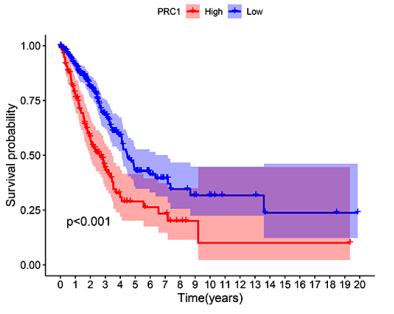
Fig3. The overall survival curves of PRC1 in LUAD.
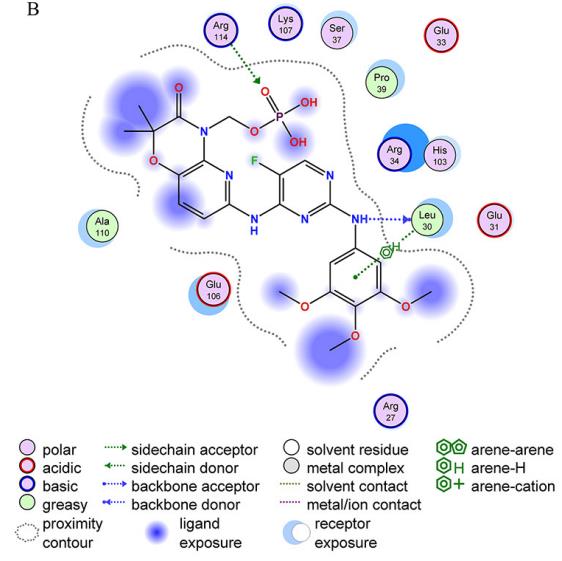
Fig4. Protein-ligand interaction for PRC1 and fostamatinib.
Quality Guarantee
High Purity
.jpg)
Fig1. SDS-PAGE (PRC1-528H)
.
.jpg)
Fig2. SDS-PAGE (PRC1-1623HFL)
Involved Pathway
PRC1 involved in several pathways and played different roles in them. We selected most pathways PRC1 participated on our site, such as RHO GTPase Effectors,RHO GTPases activate CIT,Signal Transduction, which may be useful for your reference. Also, other proteins which involved in the same pathway with PRC1 were listed below. Creative BioMart supplied nearly all the proteins listed, you can search them on our site.
| Pathway Name | Pathway Related Protein |
|---|---|
| Signal Transduction | FSTL1B,PPEF1,PRDM4,DNAL4B,RAMP3,NOTUM1A,PTHRP2,TAAR1,IQCE,GMIP |
| Signaling by Rho GTPases | ARHGAP4A,FAM13B1,KIF14,DEPDC7,ARHGEF18A,ARHGAP11A,RHOT1B,GMIP,ARHGEF17,FGD4 |
| RHO GTPase Effectors | NOXO1A,EVL,IQGAP3,NOXO1,NUF2,SGOL2,CDCA8,SPDL1,ROPN1,PRC1B |
| RHO GTPases activate CIT | RHOAE,KIF14,CIT,PRC1B |
Protein Function
PRC1 has several biochemical functions, for example, identical protein binding,kinesin binding,microtubule binding. Some of the functions are cooperated with other proteins, some of the functions could acted by PRC1 itself. We selected most functions PRC1 had, and list some proteins which have the same functions with PRC1. You can find most of the proteins on our site.
| Function | Related Protein |
|---|---|
| protein kinase binding | FAM83E,ACTA2,TRIB3,MAP3K12,GYS1,SOCS1,CAMK2N2,BCL10,ATF2,PRKAG2 |
| kinesin binding | MAPK8IP2,NUP62,CLSTN1,PLEKHM2,MAPK8IP3,KTN1,KIF1B,NEFH,GOLSYN,KIF18B |
| protein binding | DPP4,MYLK2,GCC2,LTC4S,DOK3,TRPC4AP,PRKAA1,EIF3G,LIMD2,HDAC2 |
| identical protein binding | SIAH1A,STIM1,APPL1,VPS4B,DCP1A,CASP6,CBX3,FBLN1,COL7A1,IRF3 |
| microtubule binding | ARHGEF2,VAPB,FTCD,NUMA1,PSRC1,KIF22,GAS2L1,WDR81,PRNP,KIF26A |
Interacting Protein
PRC1 has direct interactions with proteins and molecules. Those interactions were detected by several methods such as yeast two hybrid, co-IP, pull-down and so on. We selected proteins and molecules interacted with PRC1 here. Most of them are supplied by our site. Hope this information will be useful for your research of PRC1.
TRIM37;USHBP1;Dlg4;Racgap1;KRT20;CCDC85B;PTBP3;EXOSC2
Resources
Related Services
Related Products
References
- Sun, J; Wang, J; et al. Knockdown of Polycomb-Group RING Finger 6 Modulates Mouse Male Germ Cell Differentiation in Vitro. CELLULAR PHYSIOLOGY AND BIOCHEMISTRY 35:339-352(2015).
- Pemberton, H; Anderton, E; et al. Genome-wide co-localization of Polycomb orthologs and their effects on gene expression in human fibroblasts. GENOME BIOLOGY 15:-(2014).


